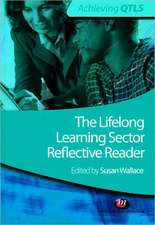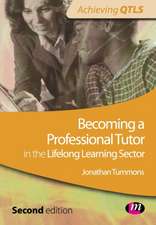Men of Color in Higher Education: New Foundations for Developing Models for Success
Editat de Ronald A. Williamsen Limba Engleză Paperback – 25 mar 2014
| Toate formatele și edițiile | Preț | Express |
|---|---|---|
| Paperback (1) | 301.26 lei 6-8 săpt. | |
| Taylor & Francis – 25 mar 2014 | 301.26 lei 6-8 săpt. | |
| Hardback (1) | 997.42 lei 6-8 săpt. | |
| Taylor & Francis – 7 mai 2014 | 997.42 lei 6-8 săpt. |
Preț: 301.26 lei
Nou
Puncte Express: 452
Preț estimativ în valută:
57.65€ • 59.56$ • 47.96£
57.65€ • 59.56$ • 47.96£
Carte tipărită la comandă
Livrare economică 20 martie-03 aprilie
Preluare comenzi: 021 569.72.76
Specificații
ISBN-13: 9781620361603
ISBN-10: 1620361604
Pagini: 190
Dimensiuni: 152 x 229 x 13 mm
Greutate: 0.25 kg
Ediția:1
Editura: Taylor & Francis
Colecția Routledge
Locul publicării:Oxford, United Kingdom
ISBN-10: 1620361604
Pagini: 190
Dimensiuni: 152 x 229 x 13 mm
Greutate: 0.25 kg
Ediția:1
Editura: Taylor & Francis
Colecția Routledge
Locul publicării:Oxford, United Kingdom
Public țintă
PostgraduateCuprins
Foreword—Freeman A. Hrabowski, III Preface—Ronald A. Williams 1. The Problem of Patriarchy—Edmund T. Gordon and Celeste Henery 2. Intersectionality—Robert T. Teranishi and Loni Bordoloi Pazich 3. Ahistoricism in the Native American Experience—LeManuel Bitsóí and Lloyd L. Lee 4. Masculinity. Through a Latino Male Lens—Victor B. Sáenz and Beth E. Bukoski 5. (Re)Setting the Agenda for College Men of Color. Lessons Learned from a 15-Year Movement to Improve Black Male Student Success—Shaun R. Harper Contributors Index
Notă biografică
Freeman A. Hrabowski LeManuel Bitsóí currently serves as an associate in the Department of Molecular and Cellular Biology at Harvard University. In addition, Dr. Bitsóí is the lead Native American scholar for an initiative focusing on men of color sponsored by the College Board. As an advocate for minority scientists and scholars, Dr. Bitsóí also serves as the secretary for the board of directors for the Society for Advancement of Chicanos/Latinos and Native Americans in Science. Dr. Bitsóí previously served as the Diversity Action Plan Program director in the Department of Genetics at Harvard Medical School, and as Training Director for the FlyBase Model Organism Database in the Department of Molecular and Cellular Biology at Harvard, where he directed training programs for underrepresented minority students interested in pursuing genomic sciences at the undergraduate and postdoctoral levels. Edmund T. Gordon is the chair of the African and African Diaspora Department as well as an associate professor in anthropology at the University of Texas at Austin. His teaching and research interests include: Culture and power in the African diaspora, gender studies (particularly Black males), critical race theory, race education and the racial economy of space and resources. His publications include Disparate Diasporas: Identity and Politics in an African-Nicaraguan Community, 1998, UT Press. Shaun R. Harper, PhD, is a professor in the Marshall School of Business at the University of Southern California, and is the USC Race and Equity Center Executive Director. He is an expert on racial, gender, and LGBT issues in corporations, law firms, Hollywood production companies, and universities. He also is an expert on college sports. He offers organizations live, and high-quality virtual experiences on a range of topics pertaining to equity, diversity, and inclusion in business and on campus.Dr. Harper has consulted with more than 200 businesses and institution
Recenzii
“The title of this volume alone, Men of Color in Higher Education: New Foundations for Developing Models of Success, inspires intrigue in educators and administrators who are concerned about the relative dearth of men of color in higher education. The absence of men of color in higher education and the regular portrayal of their poor academic performance has been propelled by deficit discourse contending that men of color are defective and inadequately suited for the academy. This volume interrogates this perspective and counters studies and programs that have largely been guided by the presumption of men of color’s academic 'deficiency.' It intimates that college and university approaches (or lack thereof) to educating men of color are habitually insufficient and offers compelling evidence that supports 'a strengths-based approach' as a model for success for academic institutions that aspire to effectively educate Black, Native American, Latino, and Asian American and Pacific Islander men.”
“Men of Color in Higher Education embraces asset-based models like the one developed at UMBC – and it holds practitioners accountable for being precise about what we mean when we talk about improving student success and providing better support for students of color. Whether examining the outcomes of Asian and Pacific Islander or African American students, the authors make a compelling case for nuance and precision. Not only must colleges and universities carefully examine student outcomes by gender and race, but they must go further in disaggregating data.
Perhaps the most powerful promise presented by Men of Color in Higher Education is that if we can help our most vulnerable students succeed, we can ensure that all students experience the type of education that is at the heart of the American dream.”
Freeman A. Hrabowski, III, President
University of Maryland, Baltimore County
“Men of Color in Higher Education embraces asset-based models like the one developed at UMBC – and it holds practitioners accountable for being precise about what we mean when we talk about improving student success and providing better support for students of color. Whether examining the outcomes of Asian and Pacific Islander or African American students, the authors make a compelling case for nuance and precision. Not only must colleges and universities carefully examine student outcomes by gender and race, but they must go further in disaggregating data.
Perhaps the most powerful promise presented by Men of Color in Higher Education is that if we can help our most vulnerable students succeed, we can ensure that all students experience the type of education that is at the heart of the American dream.”
Freeman A. Hrabowski, III, President
University of Maryland, Baltimore County
Descriere
This book brings together five of today’s leading scholars concerned with the condition of males of color in higher education – LeManuel Bitsóí, Edmund T. This book advances the critical priorities of increasing enrollments and completion rates among college men of color, and of graduating well-developed men.














